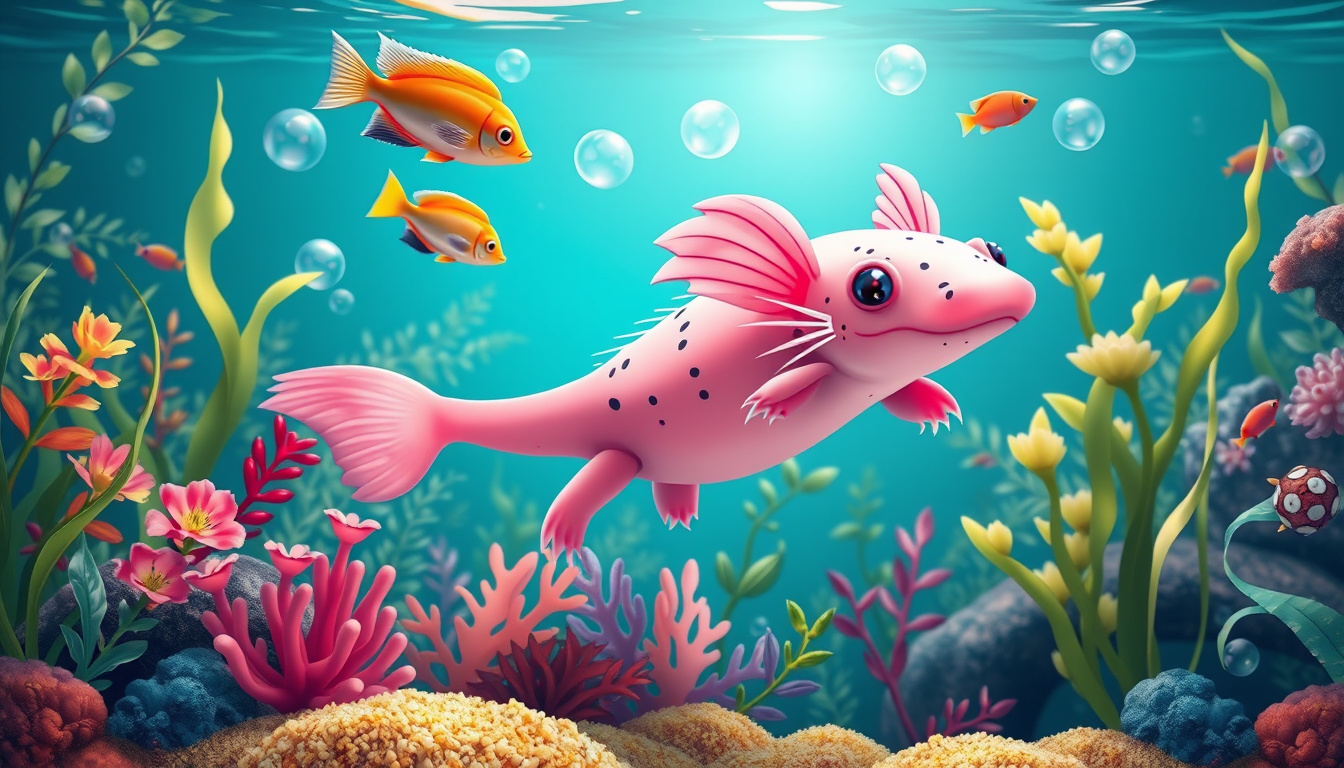Have you ever heard of an adorable creature that retains its juvenile features throughout its life?
Meet the axolotl, an enchanting amphibian that has captured the hearts of many around the world!
As we explore the axolotl captivation, we’ll delve into its unique biology, remarkable habitat, and cultural significance.
Whether you’re a budding biologist, an animal lover, or simply someone curious about the wonders of nature, this article will provide you with everything you need to know about these fascinating creatures.
From their striking appearance to their crucial role in ecosystems and conservation challenges, the axolotl is not just a pet—but a symbol of resilience and wonder.
Let’s dive into the captivating world of the axolotl!


Cultural Significance and Role in Indigenous Lore
The axolotl captivates not just with its unique appearance but also holds a profound cultural significance in indigenous lore.
For the Nahua people of Mexico, the axolotl is revered as a symbol of regeneration and transformation.
This fascinating amphibian, with its striking feathery gills and ability to regenerate limbs, often appears in myths and stories where it represents both life and death, embodying the connection between the earthly and spiritual realms.
The axolotl captivates young audiences with its enchanting qualities, making it a central figure in educational narratives about biodiversity and conservation.
By exploring the rich symbolism and stories surrounding the axolotl, younger generations can gain a deeper appreciation of indigenous cultures and the vital role of this remarkable creature in their heritage.
Conservation Status and Challenges Facing Axolotls
Axolotls, those enchanting, almost otherworldly creatures, hold a unique place in both scientific research and the hearts of many animal lovers.
However, the conservation status of these fascinating amphibians is alarming, as they are currently classified as critically endangered in the wild due to habitat destruction and pollution in their native home, the lakes of Mexico City.
The axolotl captivation phenomenon has led to a surge in interest among younger audiences who love these cute, smiling creatures.
But while axolotls can thrive in captivity and are popularly kept as exotic pets, their wild counterparts face severe threats that could lead to extinction.
Habitat loss from urban development and the introduction of invasive species continues to challenge their survival.
It’s crucial for young enthusiasts to understand both the allure of these creatures and the difficulties they face in their natural environment, as this awareness can foster a sense of responsibility towards their conservation.
Frequently Asked Questions
What is an axolotl?
The axolotl, also known as the Mexican walking fish, is an aquatic amphibian and a unique member of the salamander family, notable for its ability to regenerate lost body parts and its distinctive appearance.
What makes axolotls unique compared to other amphibians?
Axolotls are unique due to their neoteny, meaning they retain juvenile features throughout their adult life, including their external gills and aquatic lifestyle, unlike most amphibians that undergo metamorphosis.
Why are axolotls significant in culture and folklore?
Axolotls hold cultural significance in Mexican folklore, often associated with Aztec mythology, where they are viewed as symbols of regeneration and transformation, reflecting their remarkable regenerative capabilities.
What are the main threats to axolotls in the wild?
Axolotls face several threats, primarily habitat loss due to urbanization, pollution, and the introduction of invasive species in their native lakes, contributing to their critically endangered status.
How can one care for an axolotl at home?
Caring for an axolotl involves providing a suitable aquatic environment, maintaining clean water, managing the temperature, and ensuring they have a balanced diet of high-quality pellets, worms, or small fish.
[center][/center]
[center][color=rgb(10, 10, 10)][highlight=rgb(255, 248, 231)] [/highlight][/color][color=rgb(10, 10, 10)][highlight=rgb(255, 248, 231)]As an Amazon Affiliate,[/highlight][/color][color=rgb(10, 10, 10)][highlight=rgb(255, 248, 231)] [/highlight][/color][color=rgb(10, 10, 10)][highlight=rgb(255, 248, 231)]Savvy Keto makes a commission[/highlight][/color][color=rgb(10, 10, 10)][highlight=rgb(255, 248, 231)] [/highlight][/color][color=rgb(10, 10, 10)][highlight=rgb(255, 248, 231)](at no extra cost to you)[/highlight][/color][color=rgb(10, 10, 10)][highlight=rgb(255, 248, 231)] [/highlight][/color][color=rgb(10, 10, 10)][highlight=rgb(255, 248, 231)]on purchases you make[/highlight][/color][color=rgb(10, 10, 10)][highlight=rgb(255, 248, 231)] [/highlight][/color][color=rgb(10, 10, 10)][highlight=rgb(255, 248, 231)]thru links on this site.[/highlight][/color][/center]

